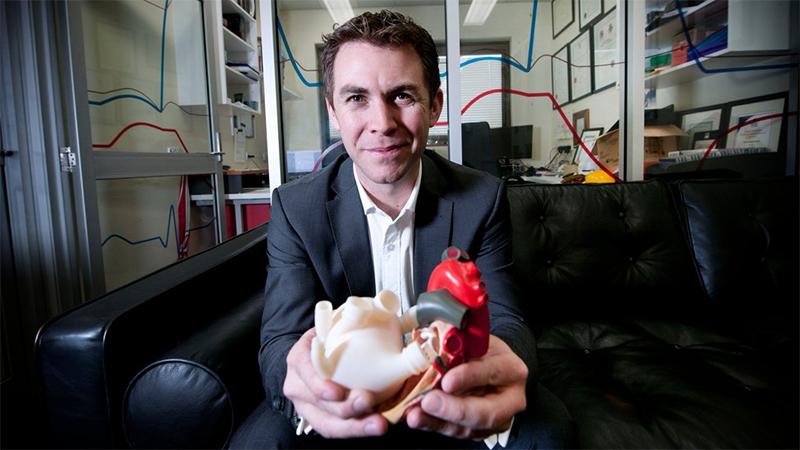
It's a fist-sized piece of titanium with one internal moving part that employs magnetics to spin a disc that creates centrifugal force to deliver blood around the body.
But the BiVACOR is being hailed as the 'holy grail' of artificial hearts by the world-leading Texas Heart Institute after five decades of research by teams around the world to invent a device that could be implanted in the body and sustain life.
Dr Daniel Timms' work was honoured with the QUT Young Alumnus of the Year award at the annual Outstanding Alumni Awards at the Brisbance Convention and Exhibition Centre this week.
Dr Timms gained a Bachelor of Engineering (Mechanical) at QUT before embarking on a PhD in biomedical engineering at QUT and started research on an artificial heart more than 10 years ago.
His research has taken him on expertise exchanges to Japan to perfect the magnetic impeller at the 'heart' of his heart and to Germany to apply precision engineering techniques to manufacture the device.
"I have worked with great teams around the world who have spent countless hours, many as volunteers just out of the passion they have for this project, to get the BiVACOR this far," he said.
Dr Timms worked on the premise that the body needs a continuous blood flow and that could be done with a device which did not necessarily have to replicate the pumping action of the heart muscle. The BiVACOR is designed to replace only the lower chambers of the heart and would be sutured to the remaining upper two chambers of the existing heart.
"Hundreds of millions have been spent on developing an artificial heart but most were modelled on the way the heart works, and were too large and didn't last for long," he said.
"The shift in thinking to researching a device that would deliver a continuous flow of blood, rather than trying to copy nature, was like our first attempts at flight - we thought we had to replicate bird flight and so early flying machines had flapping wings," Dr Timms said.
"BiVACOR has been a progression over 13 years. We still have a long way to go, maybe five years, till we can test it on humans."
Dr Timms had always had his sights set on working with the heart transplant surgeons at the Texas Heart Institute.
"Just to walk through the door would have been enough," he said.
When one of its top surgeons Dr Billy Cohn first saw the BiVACOR device he told Dr Timms he thought it would be the first practical replacement for the human heart, calling it "the most highly evolved and brilliant device I've ever seen".
"So not only did I get through the door they took the hinges off for me and invited the project over, then found the $2.1 million required to relocate our team to Texas from a philanthropist with a close association with the hospital. I moved to Houston about four months ago and will be dividing my time between there and the QUT research lab at Prince Charles Hospital.
"The Prince Charles Foundation has supported our project all the way through - lots of strawberries and cream at the Ekka have gone into our research."


